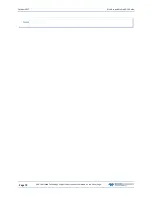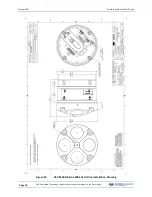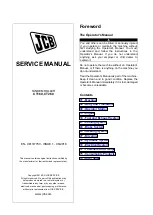
October 2017
RiverPro and RioPro ADCP Guide
Page 72
EAR-Controlled Technology Subject to Restrictions Contained on the Cover Page.
A brief review of RiverPro/RioPro operation may help clarify the specifications listed in this section.
The specifications and dimensions listed in this section are subject to change without notice.
The RiverPro/RioPro sends acoustic pulses into the water, samples the return signal, and determines wa-
ter velocity by the Doppler shift of the signal. The key parameters used in this measurement are:
•
The transmitted signal frequency
•
The ideal correlation point (transmit lag) of the transmitted signal
•
The angle of the RiverPro/RioPro beams, relative to vertical (Janus angle)
•
The speed of sound in the water
The transmitted signal frequency is produced by digital circuitry, which is controlled by a very stable, high
precision crystal oscillator. No initial factory tuning or calibration is needed, and the signal remains stable
over time due to the stability of the oscillator itself.
Similarly, the transmit lag is produced by the same digital circuitry, and is stable for the same reasons as
the transmit frequency.
The angle of the RiverPro/RioPro beams is another key parameter in the velocity measurement. The beam
angles factor directly into the velocity calculations, so these angles are measured and calibrated at the fac-
tory.
The speed of sound in the water is another factor that linearly contributes to the RiverPro/RioPro velocity
calculation. This parameter can be provided to the RiverPro/RioPro by an external source, provided as a
priori information to the instrument, or calculated in real-time by the instrument itself. In the latter case,
the speed of sound is calculated from the measured water temperature and the (a priori provided)
salinity. So the accuracy of this speed-of-sound is dependent on the accuracy of the temperature
measurement. The RiverPro/RioPro use a digital temperature sensor which is based on silicon bandgap
technology. This sensor does not require any initial calibration and is very stable over time, so no periodic
recalibration is necessary.
Summary
The majority of parameters used in the RiverPro/RioPro measurement are digitally controlled, and gov-
erned by circuitry that is very stable over time. The other parameters of importance are speed-of-sound
and beam angle. The speed of sound accuracy ultimately traces to a silicon device, based on highly stable
technology, which does not need re-calibration. The end result is that, once the RiverPro/RioPro has un-
dergone its original factory calibration, its measurements should remain within specification for the life-
time of the device.
















































